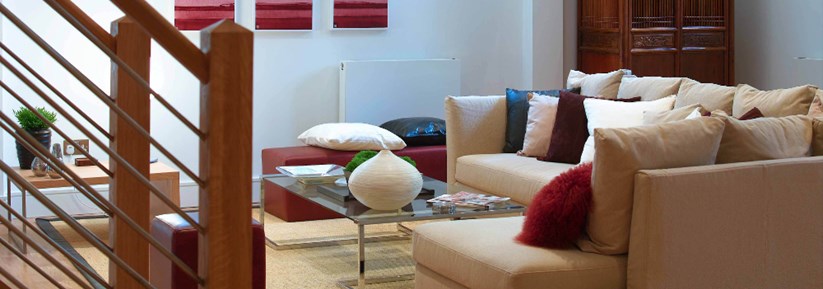How To: Downsize Your Home

Downsizing your home can save you lots of space and money – if you do it right.
People downsize for a variety of reasons –they are moving in with a partner, their adult children are moving out, or they just want to save some money. Whatever the reason, if you do downsize then it’s a good time to assess your belongings and make sure you don’t end up overstuffing your new, smaller place.
Assess your actual space needs
Lots of people end up in homes that are too big for their needs. The problem with having too much space is that you will inevitably find ways to fill it. Spare rooms are like junk drawers – stuff will start to accumulate in them as if by its own accord.
The first step when downsizing is to walk through your home, take a good look at everything you come across, and consider how often you use it. Go through your drawers, closets and shelves. How important is each item? Do you need it, or is it just taking up space?
Even if you feel your current home is “full” and you could never move somewhere smaller, a walkthrough could show you how much space you actually need.
Take an inventory
After your initial walkthrough, sit down and make a full inventory of all your belongings. Sort everything into three categories: the “must keeps”, the “nice to haves”, and the “can live withouts”.
The “must keep” items are the absolute necessities, the things that are essential and that you would need to replace immediately if they were lost. Most items in this category are basics such as ironing boards, utensils, dishes and bedding.
The “nice to haves” are the things you might not absolutely need, but that you also don’t want to get rid of, such as the TV or the couch. You can still keep these, but you might consider getting rid of them or replacing them if you moved. While your current couch might be great, could you get away with a smaller one if you needed to?
The rest, the things you can live without, are what you can get rid of. If there’s anything you’re unsure of, try putting it into storage for six months as a test. If you find you don’t need it during that time, get rid of it.
Avoid duplication
As you’re making your inventory, you may discover you have duplicates of certain items: utensils, glasses and cutlery are the most likely. Consider how many plates and glasses you’ll need at any one point, and remember that you're moving to a smaller place. If it's just yourself and your significant other, you’re not likely to need more than four of everything, on those days when you have guests or when you’re slow to wash up. You can always buy paper plates and cups for the rare times you do have bigger parties.
Furniture is the other common offender. If you’re moving into a smaller place, chances are that fewer people will be able to fit in at once, so you can get away with a smaller number of seats. Instead of taking a spare bed, you can get an air mattress for overnight guests. Be mindful of how many items you’ll need on a regular basis, and which you’ll only need for special occasions.
Sell or discard what you don’t need
Now that you know what you don’t need, it’s time to get rid of it! Car boot sales are a great way to get rid of lots of things in one fell swoop. There are also a variety of websites and apps that can help you sell your stuff. Alternatively, you can donate your things to charities or simply give them away to friends or family who will be able to make use of them.
The one caveat here is to make sure you don’t sell off anything you would replace in your new home. For instance, selling your pots might make the move easier, but you’ll only have to go out and buy new ones later. If there’s anything you’re unsure about, you can always take it with you and then decide whether to get rid of it once you’re in your new place.
Measure everything
Knowing that your new place is smaller than your current one and knowing exactly how much smaller it is are two very different things.
Get the measurements for your new place and start making a floor plan. Measure your furniture so you know what will fit where. Decide where all the furniture will go and where everything else will be stored. Don’t forget to account for doors, windows and built-in radiators or vents, as these can affect arrangements.
On the day of the move, follow your plan and make sure the furniture all gets placed before you unpack, to give you a better idea of the space.
Storage
When downsizing, people tend to overlook all the extra storage space in their current home. Make sure you know how many kitchen cupboards there are at the new place and what you’ll be able to fit inside.
Is there space above them or not? If you’re moving into a flat, does it have a storage area? How many bedroom closets?
Organise before you move
If there are things you're keeping but you know are going directly into a storage space, put them into a designated box – there are a variety of plastic containers available that are perfect for this.
Once you’re at your new home, you can put these boxes straight into the closet, or wherever, and not have to worry about unpacking them and then repacking them into that space.